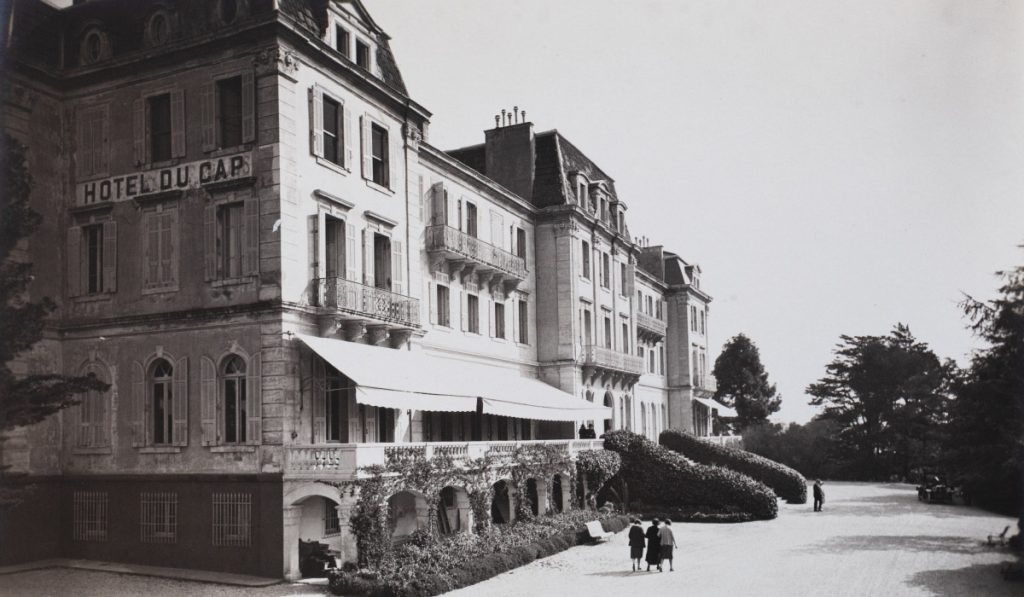Situated half way between Antibes and Juan les Pins, the Cap d’Antibes is a promontory scattered with magnificent Belle Époque villas, many of which built by visiting gentry, captivated by this evocative corner of France in the mid-19th century.
One of these visitors was a man with the unlikely name of Hippoltye de Villemessant, founder of the French newspaper Le Figaro. Struck by the beauty, and especially the particular light that can only be found in this part of the Mediterranean, his dream was to create an elegant refuge for burned-out artists in search of inspiration, to be named Villa Soleil. Though fortune was with him at the outset, he had no money to invest in developing the property and eventually lost it to a group of Russian aristocrats, part of the entourage of the tsarevich Nicholas who had been sent to the south of France in the early 1860s in an attempt to improve his worsening health. It would be a former captain of the Russian imperial army, Alexis de Pletscheyeff who in 1870 finally completed the magnificent Napoleon III style building that came to be known as the Grand Hotel du Cap.
The hotel was open for only one season, the Franco-Prussian war which began in the summer, coupled with restrictions of travel around France causing it to close. 1870 also saw the beginning of the Long Depression, a global economic downturn the likes of which had never been witnessed before. The property bubble in France burst, causing foreign investors to lose vast amounts of money. In 1876, Plestcheyeff’s company was forced into liquidation and in March 1877 the Journal de Monaco announced a public auction of the hotel and all its contents. The starting price, set at three hundred thousand francs was considered as far too high. Another attempt at selling the hotel was made the following year, but without success. For much of the 1880s the majestic Grand Hotel du Cap languished forlorn, an abandoned lady fallen on hard times, her paintwork flaking in the sunshine and her gardens overrun by nettles.
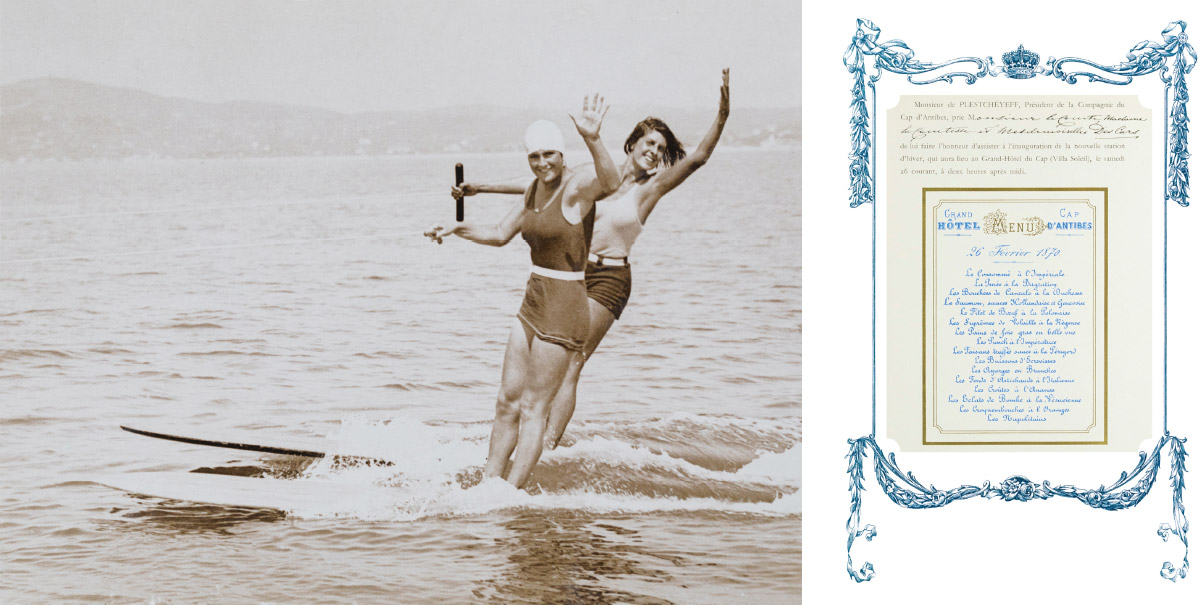
The hotel was finally sold in 1884 to a partnership made up of two Frenchmen, and Englishman and a Russian. The hotel re-opened for business running an advertisement in the Petite Marseillais that the Cap d’Antibes was free of cholera, rife in much of Europe over that particularly unfortunate decade. Despite their efforts, and a feeble revival of tourism in the region, the Grand Hotel d Cap failed to attract sufficient visitors. Then, in 1887, a young Italian by the name of Antoine Sella arrived on the scene, whose name would be associated with the hotel for the next eighty years.
The Sella family had its roots in the small town of Biella, in the foothills of the Italian Alps. It was an influential family, and very successful in a range of different areas, from winegrowing and textiles to banking. Antoine was from a less illustrious part of the family, but shared all the ambition, enterprise and commitment to hard work of his wealthier cousins. Orphaned at the age of six, he bypassed further education and instead trained in hotel management, dedicating himself to the development of a Grand Hotel which could offer comfort and quality, along with the health benefits of the hydrotherapy treatments the Biella district was renowned for. Helped by his cousins in the early days of their banking business, he chose to do this in Andorno, a hill town not far from Biella.
Antoine loved what he did, and was a truly first-class manager. The fashion for spas toward the end of the nineteenth century ensured a steady stream of guests in the summer months, though the winters were quiet, at least before the arrival of recreational skiing. He realised that if he was going to make a success of his career, he needed to find a place he could develop as a resort for the cold months of the year. Always with a watchful eye on market developments across Europe, he considered opening a place on the Italian Riviera before deciding in favour of the South of France, and the virtually abandoned neglected Hotel on the cape of Antibes. When he set sail from Genoa he was full of hope and excitement at the prospect of seeing this neglected treasure with his own eyes.
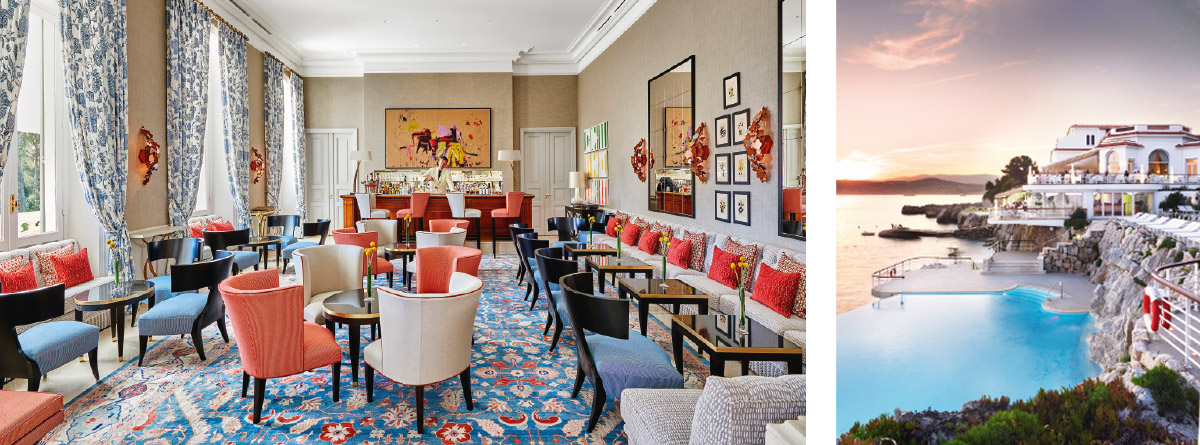
The owners of the Grand Hotel du Cap engaged Sella as their manager after his two predecessors had failed to revive the hotel. With a contract offering 10 percent of the takings in commission, Antoine set about reconfiguring and polishing this faded jewel. With all the passion, entrepreneurship and adaptability inherited from the Sella family he dedicated himself completely to the task, and in January 1889 the revamped Grand Hotel du Cap opened its doors to business again, with a staff of 40. On 31 March that year L’Avenir d’Antibes noted that the hotel was full due to Sella’s excellent management, and the improvements continued when the hotel closed for the summer season. Over the course of the decade, Antoine managed to acquire shares in the business from two of its French shareholders, and in the meantime his professional approach and dedication to work was bearing fruit.
Guests returned year after year but there were still many challenges to face: the building had no lift and no electricity, the salons were lit by gas and there was no central heating, just fireplaces in the bedrooms and no running water. Bathrooms were shared (on his honeymoon the Prince of Monaco had a zinc bathtub placed in his suite!), and Sella saw that serious modernisation was necessary to meet the technological advances of the age, but he was unable to implement changes of that order without full control. Then one day in 1903 a fateful meeting at Antibes station with one of his most loyal British clients, William Onslow, 4th Earl of Onslow would change the fortunes of the Hotel overnight. Lord Onslow and his family had been regular visitors to the Grand Hotel du Cap for about ten years. After being told how wonderful their stay had been, yet again, Sella sighed “What a pity, that not being the owner of the hotel I’m not in a position to install central heating, bathrooms, a lift… All these things indispensable nowadays!”
Lord Onslow asked “Why don’t you buy it?”
“Unfortunately I don’t have the necessary half a million to do so!” was his reply.
Without hesitation Onslow pulled out his cheque book, scribbled the required amount and his signature and handed Sella exactly what he needed, adding “We’ll agree on a mortgage later!”
The modernisation works were completed in 1911 when his second lucky break came. Antoine was hosting a large party for the Grand Duke of Mecklenburg Schwerin who lived in the nearby Villa Wenden. As they sat down for dinner one of the guests, the enormously wealthy publisher of the New York Herald, James Gordon Bennet received a cable from his sister, Mrs Isaac Bell, who was looking for accommodation for her family in the South of France.
When she arrived with her party of fourteen she was delighted by what she saw. She clicked instantly with Antoine, telling him she didn’t want to be bothered by bills and offering him a further thirty thousand francs, over and above the deposit of ten thousand left by her brother. Antoine had secured his first blue-chip client, and the rest, as they say, is history.
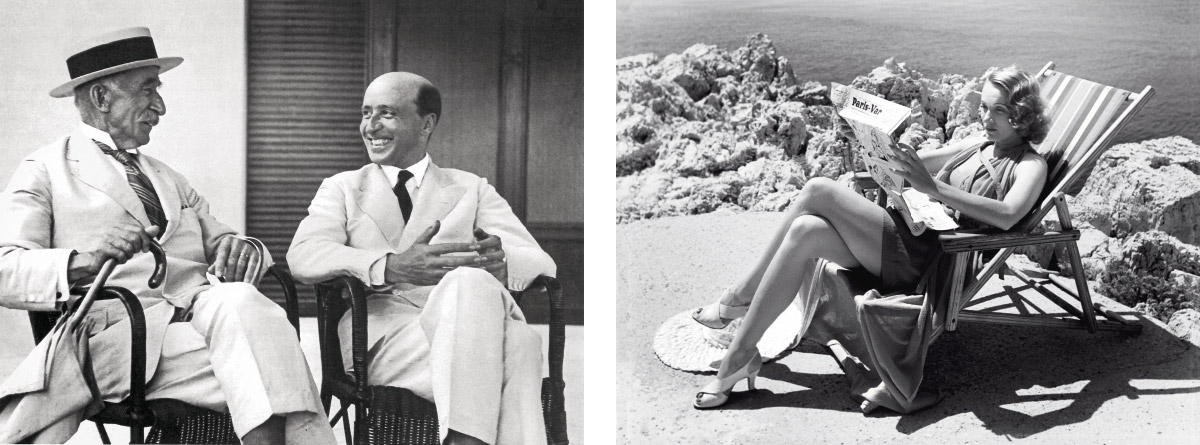
The real change began in the 1920s when the Americans and the English discovered the French Riviera, led by Gerald and Sara Murphy who rented a large portion of the now magnificent Hotel for the summer of 1923. From then on the Hotel attracted any number of writers, composers and artists. The writers and composers came for the liquor (prohibition still being the law in the States), the artists for the light. In those years everyone who was anyone stayed at the Hotel du Cap. Cole Porter, Ernest Hemmingway, Somerset Maugham, Noel Coward, George Bernard Shaw, Dorothy Parker, Isadora Duncan, Rudolph Valentino, Marlene Dietrich, James Baldwin, Ella Fitzgerald, Picasso and especially Scott and Zelda Fitzgerald.
When Antoine Sella died in 1931, a new generation took charge of the operation. His son Andre Sella was a consummate hotelier, with all the charm and savoir faire of his father, and an additional instinct for the changing needs of the period. Andre made further improvements, enlarging the pavilion and altering the area around the pool and setting up well-appointed capanne (Italian for beach huts) by the water’s edge among the pines, jasmine and oleander. The hotel’s American clients included many Hollywood stars and film-makers, whose presence ensured the hotel’s growing fascination for an increasingly global audience. The attention this drew from the press raised the hotel’s profile, but without deterring people in very high places – royalty and politicians – from staying there.
Dark times were to come in the early 1940s as the Germans tightened their grip on the Riviera, and in 1943 actually occupied the hotel until the arrival of the Americans a year later. The occupying troops had built a protective wall all along the coastline, completely changing its face with gun emplacements, tank traps and trenches disfiguring the beaches that had once attracted so many pleasure seeking tourists. But the hotel quickly recovered and the postwar years brought their own brand of glamour. The guest list of the ‘sixties and ‘seventies included Peter Sellers, John and Yoko, Romy Schneider, Serge Gainsbourg and Jane Birkin, Michael Caine, Robert Evans, Rock Hudson and Doris Day.
Back in 1964 Maja and Rudolf-August Oetker were cruising in the Mediterranean when they happened to sail in front of a lovely picturesque old building situated at Cap d’Antibes. They both fell under its spell. While they were in Argentina, five years later, Mr Luitwin-G von Boch, the owner of Villeroy & Boch and a loyal guest of the hotel, got in touch with his friend Rudolf-August Oetker to tell him that the building was for sale. He told him what a great business opportunity the Grand Hotel du Cap represented. André Sella was looking for a buyer who would maintain the hotel’s family tradition and spirit. In 1969 Maja and Rudolf-August Oetker finally met André Sella. The two men instantly got on well as they felt a genuine mutual respect and empathy for each other and they realized straight away that they shared the same philosophy and values.
That very same year Rudolf-August Oetker purchased this precious gem.
The change in ownership marked a new era in the history of the Grand Hotel du Cap. The Oetkers’ stamp was already securely on their Riviera hotel when work began on adapting the Grand Hotel du Cap to the twenty-first century. Unsurprisingly, the formula for success the hotel has enjoyed for near on a century needed very few changes.
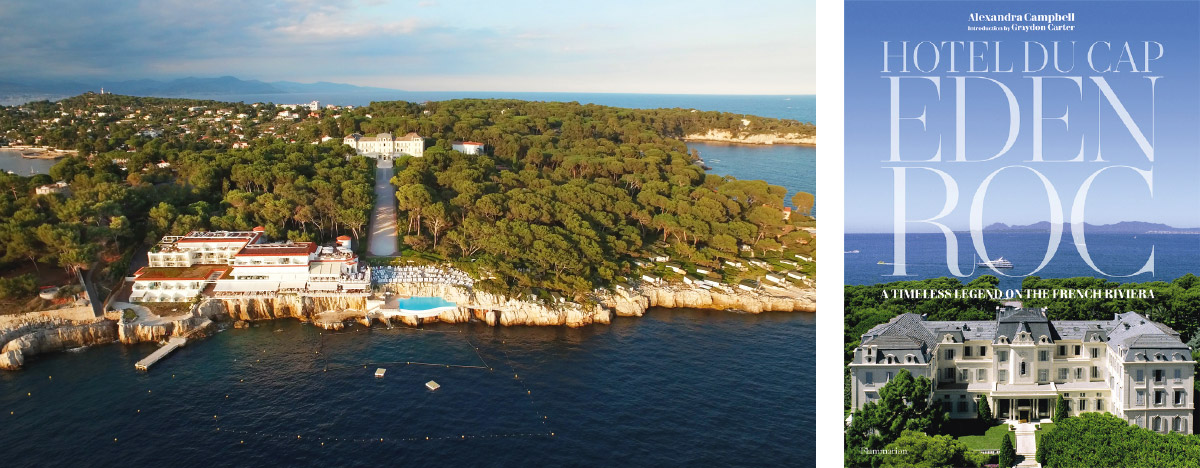
NEWLY DESIGNED AREAS, AND NEW CHEFS, CELEBRATING A CONTEMPORARY TASTE
Ready for the new season, one of the most glamorous hotel property of the French Riviera reopens with fully refurbished areas by acclaimed Brazilian Architect Patricia Anastassiadis.
Throughout the years, this legendary place has evolved carrying stories and anecdotes of the personalities that visited throughout the decades. With this in mind, Patricia Anastassiadis has been commissioned to come up with a design concept for the three main dining areas including the piano-bar La Rotonde, the Eden-Roc restaurant for lunch, the Louroc restaurant for dinner and the Eden-Roc Grill, that would respect the history of the hotel property. Anastassiadis’ focus was to provide a fresh and contemporary look for the dining areas by creating a continuation in the dialogue started by previous architects and designers.
“With this project, we are developing the archeology of today by digging into the recollections of a vivid past that is still present in every single corner of the property.”
To celebrate this exceptional milestone, the Hotel du Cap-Eden-Roc has decided to offer a new dimension to the gastronomic experience in its different restaurants and bars matching with the new design implemented by Patricia Anastassiadis. The Executive Chef, Arnaud Poëtte, the newly appointed Chef, Sébastien Broda, and the Pastry Chef, Lilian Bonnefoi, will now be advised by Eric Frechon, three Michelin starred Chef at Le Bristol Paris. They all together will mobilize their talent to infuse the restaurants with an added touch of elegance and creativity.
A TIMELESS LEGEND ON THE FRENCH RIVIERA – BY ALEXANDRA CAMPBELL
To celebrate the exceptional anniversary of Hotel du Cap-Eden-Roc, French publisher Flammarion in Paris is launching a stylish illustrated book, available in French and English. Featuring first-hand accounts, descriptions in literature, hundreds of vintage photographs and unpublished archives, along with new photography made especially for the book, this beautiful volume showcases the hotel’s lively history from 1870 to the present.

